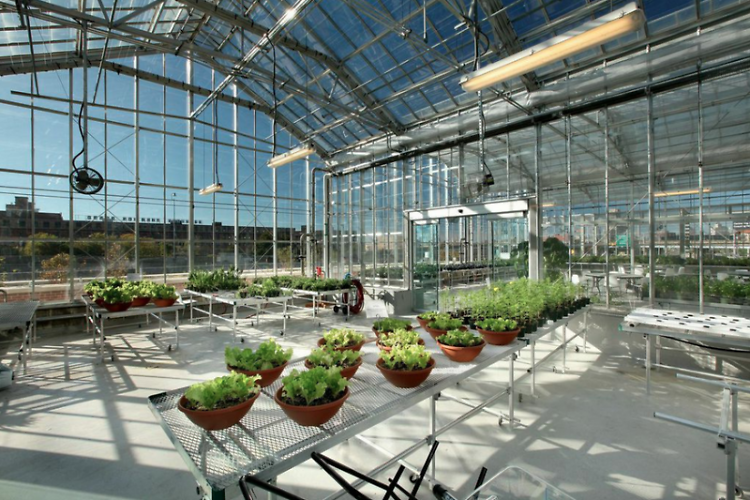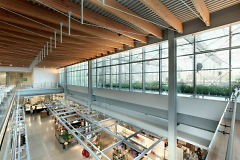The Downtown Market achieved LEED certification for implementing strategies and solutions aimed at achieving high performance in sustainable site development, water savings, energy efficiency, materials selection and indoor environmental quality. Catalyst Partners managed the LEED certification process, including the documentation for the Urban Ag credit. Fishbeck, Thompson, Carr & Huber, Inc. was the project’s engineering firm. It is also the first project in the country to receive USGBC’s Urban Agriculture credit (SSpc82), which gives a point during the certification process to projects that improve human health and well-being, community involvement and education on food production.
The LEED rating system is the foremost program for buildings, homes and communities that are designed, constructed, maintained and operated for improved environmental and human health performance.
“Sustainability, community health and accessibility to local food is the goal of the Downtown Market, and as one of the first LEED Gold Certified public markets in the country, we are proud to continue these practices on a daily basis,” said Mimi Fritz, president and CEO, Grand Rapids Downtown Market.
Designed by Hugh Boyd and
Progressive AE, and built by
Pioneer Construction, the building incorporates energy-efficient features into its design and daily use, including:
- A 4,000-gallon rainwater harvesting tank provides irrigation for greenhouse plants.
- Rain gardens and green roofs contribute to on-site storm water management.
- Fifty geothermal wells around the property are part of a heat pump system supplying two-thirds of the heating and cooling needs.
- The building’s LED lighting is 90 percent more efficient than halogen lighting.
- Ultra-efficient heat pumps and water-cooled compressors result in a cost-effective comfortable building environment year-round.
- Energy efficient walls, roofs and windows reduce demands on heating and AC.
“Creating a LEED-certified building and incorporating as many sustainability aspects as possible was very important to the project’s overall goals,” said Hugh A. Boyd, FAIA, lead design architect. “In addition to creating a sustainable building and using energy efficiently, we wanted to keep operating costs down for the tenants who are running their small businesses here.”
Materials from warehouses previously on the building’s site were reused to build as much as possible of the current building. The massive wood beams from the original structure were used as the design feature in the main structure, and the preexisting concrete was ground up to make the paving material for the Market’s parking lot.
“From the beginning, sustainable design was a primary driver for the Downtown Market. Materials were reclaimed and recycled, efficient systems were meticulously designed, and innovative products were incorporated. Together, these and many other components make the Downtown Market a sustainable showpiece for Grand Rapids and greater community beyond,” said Craig Nicely, architect at Progressive AE, which partnered with Hugh A. Boyd Architects on the building’s design.
The Downtown Market was also awarded an Urban Agriculture pilot credit as part of the certification, the first project ever to receive that credit. Pilot credits are qualifications that are being tested to see if they fit into the overall rating system. To receive the Urban Agriculture pilot credit, projects must meet certain requirements, such as allocating a certain amount of square footage to be used for growing space (the Market has 6500 square feet of gardens and greenhouse), using organic growing practices and an integrated pest management system, and allowing community access for education and use.
“Building operations are nearly 40 percent of the solution to the global climate change challenge,” said Rick Fedrizzi, president, CEO and founding chair, U.S. Green Building Council. “As the newest member of the LEED family of green buildings, the Grand Rapids Downtown Market is an important addition to the growing strength of the green building movement.”
The Rapidian, a program of the 501(c)3 nonprofit Community Media Center, relies on the community’s support to help cover the cost of training reporters and publishing content.
We need your help.
If each of our readers and content creators who values this community platform help support its creation and maintenance, The Rapidian can continue to educate and facilitate a conversation around issues for years to come.
Please support The Rapidian and make a contribution today.



